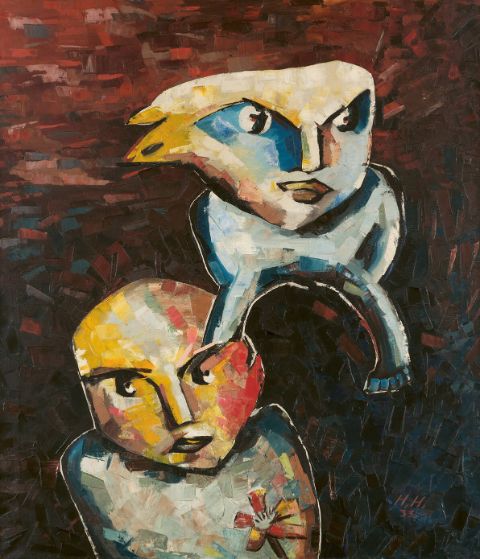Hannah Höch

Hannah Höch, Wilder Aufbruch (1933). Permanent loan from Berliner Sparkasse to Berlinische Galerie, photo: Kai-Annett Becker / Berlinische Galerie, © VG Bild-Kunst, Bonn 2025
Hannah Höch was a key figure in the Dada art movement in Berlin, breaking new ground as a female artist in a predominantly male art scene, denouncing fascism through her work. Between 1933 and 1945, the Nazis banned and censored artists they deemed ‘degenerate’, including Höch, prohibiting them from exhibiting, as part of the regime’s oppression of modern art. Throughout this period, Höch continued to create art in ‘inner exile’, moving to a house in the outskirts of Berlin. Mostly known for her collages and photomontages, which express the irrationality and violence inherent in the nationalist, racist, and militarized realities, Höch also created symbolically charged paintings. The two paintings included in Global Fascisms are emblematic of her anti-fascist stance: Wilder Aufbruch (1933) symbolically depicts the moment of the rise of fascism in Germany by portraying a figure bursting out of another, representing the moment when ‘the German World of Men began this savage outbreak of national arrogance, injustice, and madness for world domination’ (Hannah Höch). When the war ended, Höch painted 1945 (1945), in which the upper figure’s eyes are closed, as if dead and returning from whence they came.
WORKS IN THE EXHIBITION: Wilder Aufbruch (1933), oil on canvas, 94 × 82 cm; 1945 (1945), oil on canvas, 92.8 × 81.4 cm. Permanent loans from Berliner Sparkasse to Berlinische Galerie